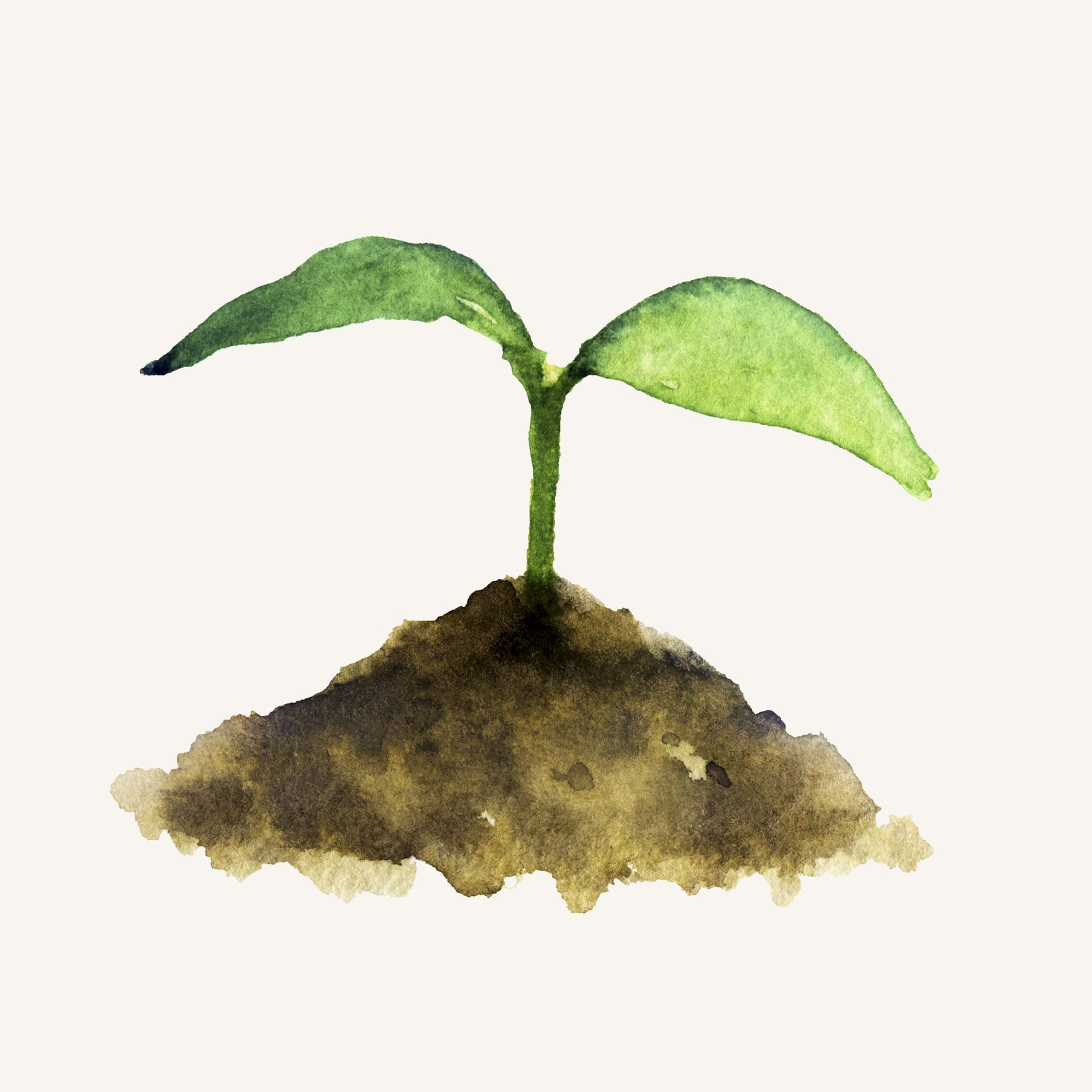
Earthling’s Guide to Healing the Planet's Soil

Getting Down and Dirty
Soil and vegetation have a symbiotic relationship. With the right ratio of soil organic carbon, soil presents optimal growing conditions. It’s porous structure make it a perfect vessel for water and air. This texture also allows plants to anchor their roots in a breathing substrate. When the planet’s soil is protected with an abundance of vegetation it has the capacity to store larger amounts of water. In correspondence, soil serves as a shield to safeguard the delicate plant roots from extreme weather.
Soil’s moisture, or water retention capacity, depends on its structure, organic matter content, and rooting depth. It has the potential to reach a maximum of 20 times its own weight. But that’s not it’s entire function.
Soil is comprised of 5 percent organic matter, 25 percent air, 25 percent water, and 45 percent minerals. In a healthy state, soil cycles its nutrients. Of the 18 essential nutrients in a plant’s tissue, 15 are directly absorbed from soil. For this reason, 95 percent of food comes from soil. And in North and Central America family farming is cultivating 83 percent of the fertile soil.
Soil[ed]
Unfortunately the condition of the planet’s soil is not being adequately maintained. In fact, every five seconds, the equivalent of one soccer pitch of soil is eroded. And already, 33 percent of global soil is degraded, leaving less than 60 years of topsoil.
Soil degradation is the removal of this topsoil through natural climatic conditions such as water and wind. But, it is accelerated 1000 times through human-induced erosion. Activities such as urban waste, industrial interference, and unsustainable farming practices contribute to soil erosion.
Urban waste pollutes soil with chemicals that cause pH imbalances. These acidic compounds deplete nutrients. In North America, soil is poor due to this acidification and nutrient deficiency. In addition, as we continue to urbanize, our soil is being sealed under city expansion. This is limiting our soil’s capacity and ultimately causing our soils to release rather than sequester and hold greenhouse gasses.
Farming also strips nutrients with the overuse of fertilizers, pesticides, and monoculture. The static nutrient demand of a single crop on a field is overwhelming for soil. Other unsustainable farming practices such as down-slope tillage, overgrazing, and deforestation erode vegetation cover. What’s worse, overgrazing increases soil density. This compaction impedes root penetration which is reliant on the porosity of soil.
Is It Drought or Poor Porosity?
Compacted soil resulting in low porosity levels is the real reason behind low crop production. It is not entirely a drought crisis. Without the top layer of vegetation, there is an increased risk of landslides and flooding. This erodes soil’s protective layer making it susceptible to water-logging.
When the planet’s soil is compacted under poor farming practices or suffocated by industrial expansion, it loses porosity and nutrients. Without its porous structure to hold air, water, and nutrients, it becomes infertile. For this reason, insufficiency of soil moisture, rather than insufficiency of rainfall is more often related to poor crop yields.
A nutrient imbalance also impedes farming. It causes a crop yield reduction of 50 percent, which leads to food insecurity. Of the crops available, there is a lack of nutrients. Geneticist M.S. Swamiriathan shares, “soil anemia also breeds human anemia. Micronutrient deficiency in the soil results in micronutrient malnutrition in people.” This poor soil quality results in what is known as hidden hunger.
Our actions today will affect others tomorrow. It is predicted that 90 percent of our soil will be eroded by 2050. What’s more, it can take 1,000 years to produce 2-3 cm of soil. Leaving future generations unable to meet their basic food and water needs.
Plant It
Some say that the urbanization sealing our soils is irreversible. Others might concede that replenishing our soils is too big of a feat. But, many hold in their hearts a desire to beat the challenge. Here’s what can be done:
- Everyone: raise awareness about the importance of soil by practicing a habit of caring
- Plant grass, shrubs, trees, or flowers where there is a lack of vegetation
- Students/Teachers: plant a school garden with native plant species
- Compost (½ of our household waste can nurture our soil)
- Recycle dangerous materials like electronics or batteries
- Farmers: adopt conservation agriculture and sustainable soil management based on agroecology (this could increase crop yield by 58 percent, or 17.6 megatonnes per year)
- Build terraces, wind breaks, and shelter belts
- Capture runoff from adjacent lands and harvest rainwater
- Limit tillage (limits depletion of nutrients)
- Cover vegetation with mulch (improves soil moisture and prevents degradation)
- Rotate crops and use lime (keeps our soil’s pH level and nutrients in balance)
- Policy makers: integrate sustainable soil management policies that support the protection of specifically arable soil from being sealed by expanding infrastructure. Soil not only has the potential to end world hunger, it is also the key to solving global environmental challenges.
- Scientists: pursue innovative solutions and technology to assess, prevent and control soil degradation
What will you do to save the planet’s soil? Join the movement! Post a picture on Instagram, Facebook, or Pinterest with these hashtags: #WorldSoilDay #StopSoilErosion #StopSoilPollution #ZeroHunger #FeedOurSoils



Leave a comment